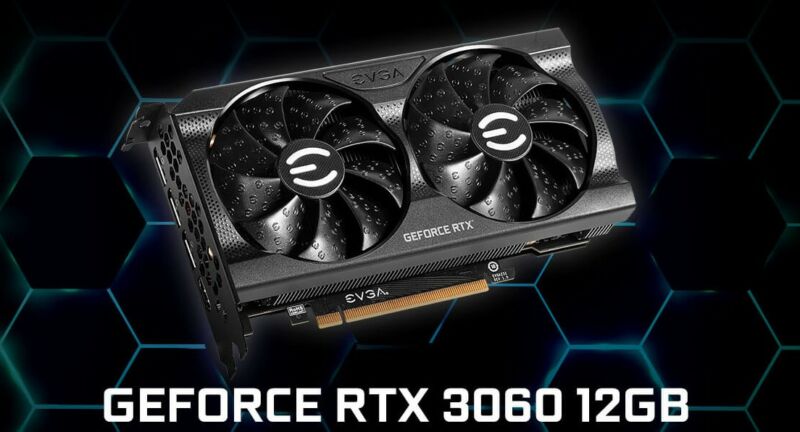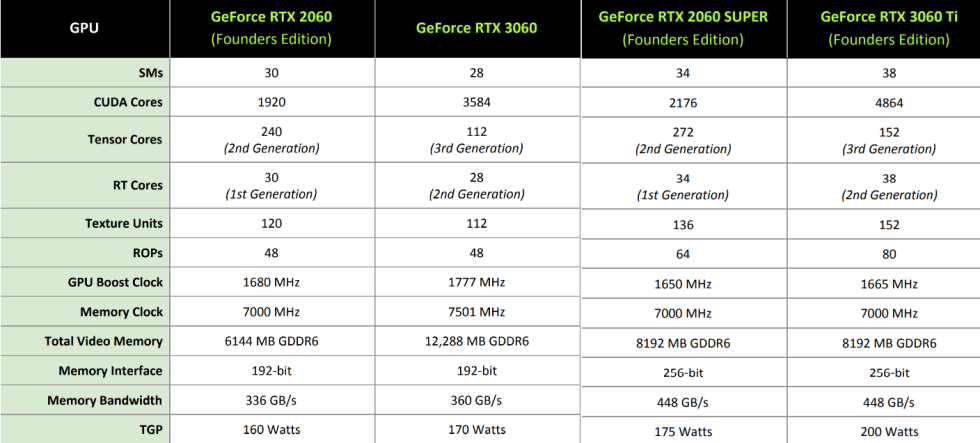
The past year of graphics card reviews has been an exercise in dramatic asterisks, and for good reason. Nvidia and AMD have seen fit to ensure members of the press have access to new graphics cards ahead of their retail launches, which has placed us in a comfy position to praise each of their latest-gen offerings: good prices, tons of power.
Then we see our comment sections explode with unsatisfied customers wondering how the heck to actually buy them. I've since softened my tune on these pre-launch previews.
I say all of this up front about the Nvidia RTX 3060, going on sale today, February 25 (at 12pm ET, if you're interested in entering the day-one sales fray) because it's the first Nvidia GPU I've tested in a while to make my cautious stance easier. The company has been on a tear with its RTX 3000-series of cards in terms of sheer consumer value, particularly compared to equivalent prior-gen cards (the $1,499 RTX 3090 notwithstanding), but the $329 RTX 3060 (not to be confused with December's 3060 Ti) doesn't quite pull the same weight. It's a good 1080p card with 1440p room to flex, but it's not the next-gen jump in its Nvidia price category we've grown accustomed to.
Plus, unlike other modern Nvidia cards, this one lacks one particular backup reason to invest as heavily: cryptomining potential. (And that's intentional on Nvidia's part.)
Hopefully your plate's better than mine
-
The EVGA RTX 3060, as posed next to the larger RTX 3060 Ti Founders Edition.Sam Machkovech
-
RTX 3060 glamour shot.Sam Machkovech
-
EVGA's version opts for a flat, square back, as opposed to some sort of fancy cooling routing through a more carved or styled board.Sam Machkovech
-
In order to install my review GPU into my testing rig, I had to remove this mounting plate.Sam Machkovech
-
A sampling of other RTX 3060 cards being sold by OEMs starting today.Nvidia
-
Little 3060.Nvidia
-
White 3060.Nvidia
-
Larger white 3060.Nvidia
-
Garish 3060.Nvidia
Ahead of today's review, Nvidia provided Ars Technica with an EVGA version of the RTX 3060, since this model won't receive an Nvidia "Founders Edition" label (the first for any mainline RTX card). This 3060 variant keeps things simple in terms of construction, with two traditional, bottom-mounted fans and none of the "passthrough" fan construction found in Nvidia's FEs, and it isn't advertised with any particular supercharged cooling options. Despite the lack of clever fan construction, this model runs cool and quiet at stock clocks, never topping out above 65°C at full load.
Unfortunately for my testing rig, however, I had to take the unusual step of unscrewing EVGA's mounting plate so that it wouldn't block my ability to insert the GPU into my case. In my anecdotal case, this was the first time I've ever had to do this with a GPU I've reviewed or tested in my seven years at Ars (though admittedly, that has mostly been with Nvidia's and AMD's stock models, as opposed to a wide variety of OEMs).

Thankfully, I was still able to stably situate the EVGA GPU into my machine for testing purposes, at which point I began comparing it to the nearest-performance GPU I had in my possession: the RTX 2060 Super, released in July 2019 for $399. That model was a much-needed upgrade to the tepid RTX 2060, and it arrived as a good enough option for gamers who wanted robust 1080p performance across the board, along with plenty of 1440p options and a reasonable way to dip toes into the worlds of ray tracing and Nvidia's proprietary deep-learning super sampling (DLSS).
In my testing, I found that the "$70 cheaper" GPU (as priced in a magical, scalper-free marketplace) generally landed neck and neck with the July 2019 card, as opposed to blowing away the older model. This appears to boil down to the give-and-take nature of the two cards' spec tables. The RTX 3060 has over 150 percent of the 2060 Super's CUDA cores, along with 150 percent of the GDDR6 VRAM and a slight lead in core clocks. But its VRAM is definitely not the same kind, downgraded from a 256-bit bus to a 192-bit one with lower memory bandwidth. Plus, comparing each card's proprietary "RTX" potential by counting tensor cores and RT cores is tricky, since the RTX 3060 has fewer cores than the RTX 2060 Super in both counts, albeit "newer" generations of each.
-
The RTX 3060 and the older RTX 2060 Super are neck and neck throughout this benchmark collection.
-
This is a particularly punishing benchmark, meant to show percentage differences between models. And notice here, a divide emerges when RT is turned to max, versus when it's disabled entirely.
-
In Watch Dogs Legion's case, on the other hand, enabling and disabling RT didn't change the percentage differences between the RTX 3060 and the 2060 Super (not shown in this chart, apologies).
-
Ray tracing enabled for all Minecraft tests.
-
Ray tracing enabled for all Control tests.
-
The rest of the gallery's benchmarks do not include ray tracing.
-
A newer Rockstar game benefits more from the newer GPU.
-
The older RTX 2060 Super wins this benchmark battle with an older Rockstar game.
-
Comparable results in Novigrad, but the older 2060 Super wins.
-
Borderlands 3 has recently joined our testing suite, and I'll beef up its benchmark numbers for other GPUs in reviews to come.
All above benchmarks were conducted on my standard Ars testing rig, which sports an i7-8700K CPU (overclocked to 4.6GHz), 32GB DDR4-3000 RAM, and a mix of a PCI-e 3.0 NVMe drive and standard SSDs.
My first question mark came when I saw the RTX 2060 Super beat the RTX 3060 in a variety of 3DMark benchmarks. The older card enjoyed a performance lead as high as 6.5 percent in a straightforward GPU muscle test ("Fire Strike Ultra"), and it even bested the newer card, however marginally, in a head-to-head 3DMark ray-tracing showdown.
With this knowledge in hand, I grabbed an Nvidia benchmark table provided to members of the press, which aligned with most of my other tests—albeit with results that were a bit more charitable to the newer RTX 3060 than my own. Where Nvidia found that The Witcher 3 and Cyberpunk 2077 (ray tracing disabled) were "dead even" between the 3060 and the 2060 Super as tested in 4K resolution, my personal, repeatable benchmarks gave the older card a lead. Grand Theft Auto V, which runs a scant 2.9 percent faster on the 2060 Super in 4K, doesn't appear in Nvidia's provided benchmark table.
But the rest of my tests did show that the RTX 3060 generally clawed ahead in gaming performance. Many of the best results came when a given benchmark included ray-tracing effects, yet even as a pure, old-school rasterization card, it often enjoyed a noticeable 9 percent lead on non-RT tests.
reader comments
138